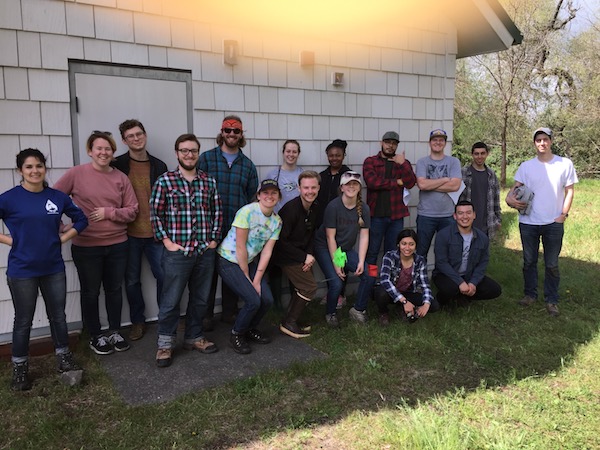Today, I took my Conservation Biology students on a spontaneous field trip, and it was wonderful!
We were talking about invasive species, fish in particular, and when a picture of a carp popped up in my powerpoint, I remembered that a few weeks ago, Director of Landscaping Sam Youney had mentioned to me that there are some huge koi living in the campus lakes. When I told the class that there are huge fish (2 – 3 feet long, at least) in the Art and Commencement Lakes, they were skeptical . . . so I decided that we’d go on an impromptu field trip, to see if we could find them. (We were hitting the point during lecture where I usually stop to give the class a stretch break anyway, so we just took a somewhat extended stretch break). 🙂
We left the ETC and made the short trek to the Art Building, where I sent them to fan out around the Art Pond to see if they could spot the (exotic! invasive!) koi.
In the end, we weren’t able to find any koi, although we did see a turtle (invasive red-eared slider), a turkey vulture (native bird), a lovely black doggie (domesticated, walking with its humans), and hundreds of teeny, tiny fish (center bottom photo). I’m not sure what they are – Gambusia (mosquito fish), maybe? As we walked, we also talked about overgrowth of algae and aquatic plants, invasive terrestrial plant species (of which we saw several), as well as the many native trees that form the canopy along the creek.
I’m still determined that we’ll find those koi, though. I’m offering a bounty (in extra credit points) to any student who brings me a picture of one of the huge fish* before the end of the semester. 😀

*Also accepting photos from anyone who spots a lake monster – I’m really thinking that SSU needs its own lake monster, wouldn’t you agree?





































